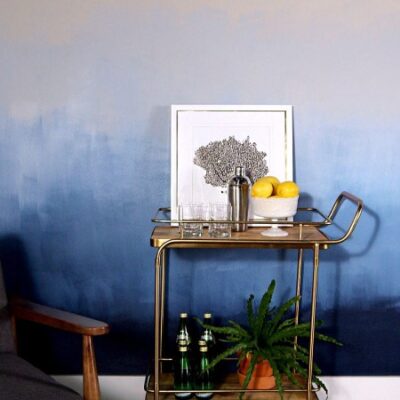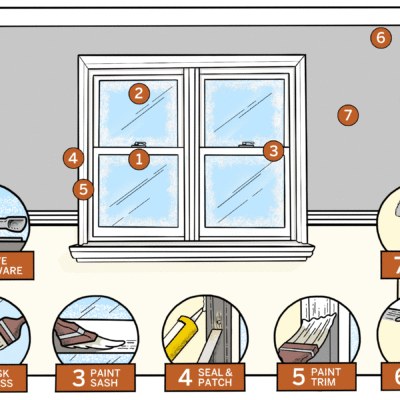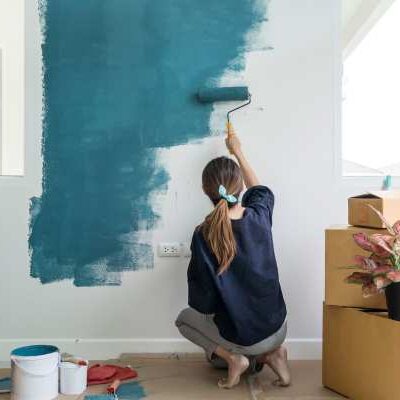Tips on Testing Paint Samples and Choosing Colors Based on Lighting

Choosing the right paint color can transform a space, making it more inviting, spacious, or even energizing. However, picking the perfect hue isn’t as simple as selecting a swatch in the store. Lighting plays a crucial role in how colors appear in your home, and testing paint samples under various lighting conditions is essential for making an informed decision. Here are some expert tips on how to test paint samples and choose colors based on lighting.
Understanding the Impact of Lighting on Paint Colors
Lighting can drastically alter the appearance of paint colors. Here are the main types of lighting and how they affect colors:
- Natural Light: The amount and direction of natural light can change throughout the day. North-facing rooms tend to receive cooler, bluer light, while south-facing rooms get warmer, yellower light. East-facing rooms get bright, morning sunlight, and west-facing rooms receive warm, evening light.
- Artificial Light: Incandescent bulbs cast a warm, yellowish light, while fluorescent bulbs tend to emit a cooler, bluish light. LED lights are available in a range of color temperatures, from warm to cool.
- Time of Day: Colors can look different at various times of the day. A color that looks perfect in the morning may appear entirely different in the evening.
Tips for Testing Paint Samples
1. Use Large Samples
When testing paint colors, larger samples provide a more accurate representation than small swatches. Purchase sample-sized paint pots and apply the color to large pieces of poster board or directly onto the walls. Aim for sections at least 12×12 inches.
2. Test in Different Areas
Paint multiple test areas in the room, including at eye level, near the floor, and close to the ceiling. This helps you see how the color interacts with different elements in the room and under various lighting conditions.
3. Observe at Different Times of Day
Examine the paint samples at different times of the day—morning, afternoon, and evening—to see how the color changes with the natural light. Pay attention to how artificial lighting affects the color in the evening.
4. Consider Surrounding Colors
The existing colors in the room, such as furniture, flooring, and trim, can influence how a paint color looks. Ensure that your test samples are near these elements to see how they interact.
5. Move the Samples Around
If you’ve painted sample boards, move them around the room to different locations. This can help you understand how the color looks from various angles and in different parts of the room.
6. Use a White Background
Placing a white sheet of paper or board next to your painted sample can help you see the true color without interference from existing wall colors.
Choosing Colors Based on Lighting
1. North-Facing Rooms
North-facing rooms receive cooler, indirect light, which can make colors appear darker and cooler. To counteract this, consider using warm, light colors like soft yellows, warm neutrals, or creamy whites to add warmth and brightness.
2. South-Facing Rooms
South-facing rooms benefit from warm, bright light throughout the day. Almost any color can work in these rooms, but be mindful that strong, bright colors can appear even more intense. Soft, cool tones or muted colors can help balance the natural warmth.
3. East-Facing Rooms
East-facing rooms receive bright, morning sunlight, which tends to be warm and yellow. Cooler colors, like blues and greens, can help balance the warmth in the morning, while these colors may appear more neutral in the afternoon.
4. West-Facing Rooms
West-facing rooms enjoy warm, evening light, which can make colors appear rich and vibrant in the late afternoon. Warm colors will become more intense, while cooler colors can provide a calming effect in the morning.
5. Artificial Lighting Considerations
- Warm Lighting (Incandescent/LED with warm temperatures): Enhances warm colors (reds, oranges, yellows) and can make cool colors appear muted or dull.
- Cool Lighting (Fluorescent/LED with cool temperatures): Accentuates cool colors (blues, greens) and can make warm colors look more subdued.
- Neutral Lighting: Provides a balanced, true-to-color representation, making it easier to see the paint’s true hue.
Final Tips
- Trust Your Instincts: While lighting and sample testing are essential, trust your gut feeling about what looks best in your space.
- Live with the Samples: Leave the test samples on the wall for a few days to see how you feel about the color over time.
- Consult a Professional: If you’re unsure, a professional color consultant or interior designer can provide expert advice tailored to your specific space and lighting conditions.
Choosing the perfect paint color involves careful consideration of how light interacts with the hue. By following these tips and thoroughly testing paint samples under various lighting conditions, you can confidently select a color that enhances your home’s beauty and ambiance.









